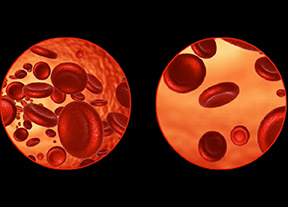The red cell mass increases to accommodate the need to carry the extra oxygen during pregnancy and the greater plasma volume increment is needed to cope with the very large increases in blood flow to organs which require little extra oxygen, the skin and the kidneys of the mother.
But in India, the scenario is totally different. Approximately 30 to 45 percent of women in the childbearing age group are iron deficient and Last year, India reported anemia among 45 percent of its pregnant women – the highest in the world. National Family Health Survey statistics
reveal that every second Indian woman is anemic and one in every five maternal deaths is directly due to anemia. According to the National consultation on control of nutritional anemia in India and, anemia is defined as the hemoglobin of less than12 g/dl in females. Average woman loses 25mg of iron per month during her menstruation. On an average, a newborn baby would have taken a reserve of around 800 mg from his mother. So pregnant women would have given so much iron to her baby. So she needs to accumulate that much iron to accommodate the needs of the baby.
The main causes of anemia are nutritional and infectious. Among the nutrition factors contributing to anemia, the most common one is iron deficiency. Dietary intake of most women in the reproductive age group is poor and is less than the recommended value. It is due to a diet that is monotonous, but rich in substances (phytates) inhibiting iron absorption so that dietary iron cannot be utilized by the body. Iron deficiency may also be aggravated by poor nutritional status, especially when it is associated with deficiencies in folic acid, vitamin A or B12. According to WHO, women of childbearing age need to absorb 2-3 times the amount of iron required by men or older women. Apart from that, Poverty, caste factors and poor sanitation are some of the other leading causes of anemia in pregnant women in India. Frequent occurrences of malaria and worm infestations too result in high incidence of anemia. The government has launched several programs to abate anemia for eg - It launched a weekly iron and folate program which administers iron and folic acid tablets to adolescent girls and boys, screens them for moderate-to-severe anemia and ensures biannual de-worming and counseling. However, the strategy of simply handing out iron tablets to pregnant women has not worked as a solution. Only 23.6 percent of pregnant women consumed more than 100 iron and folic acid tablets out of the 31.2 percent who received them during pregnancy, according to the Rapid Survey on Children 2014.
In the milder form, anemia is “silent”, without symptoms. In its severe form, anemia is associated with symptoms like fatigue, weakness, dizziness, and drowsiness. Pregnant women usually tend to have slight breathlessness, which is normal, but if the breathlessness comes about even at rest, then it could be a sign of danger. Anemia during pregnancy also increases the chances of fetal deaths, abnormalities, pre-term and underweight babies.
Diagnosis
Several blood tests like - low Serum iron, Low Serum ferritin, increasing Total iron binding capacity.
Treatment
Iron supplements once daily typically in the morning. But in severe cases, Intravenous iron may be given.

